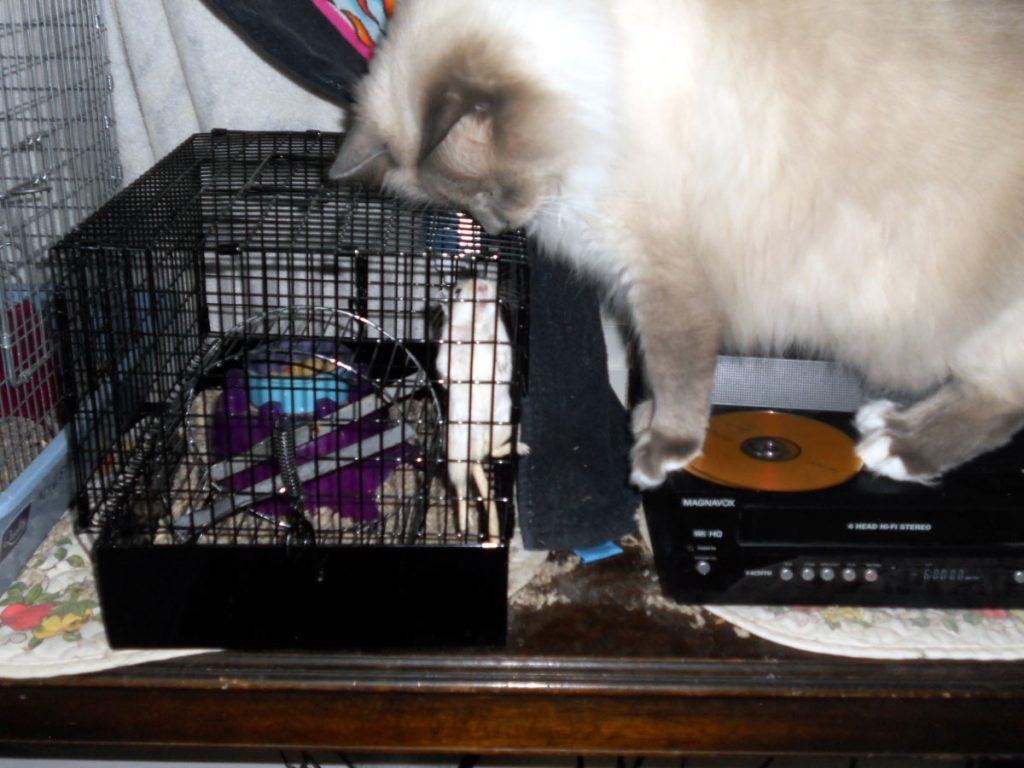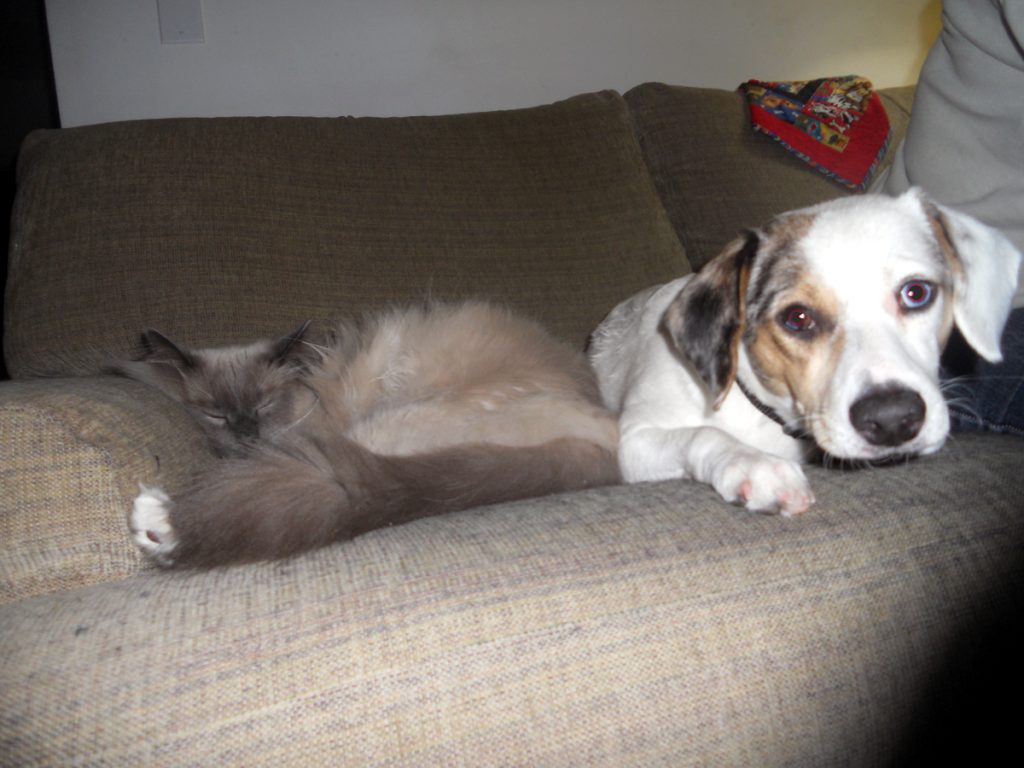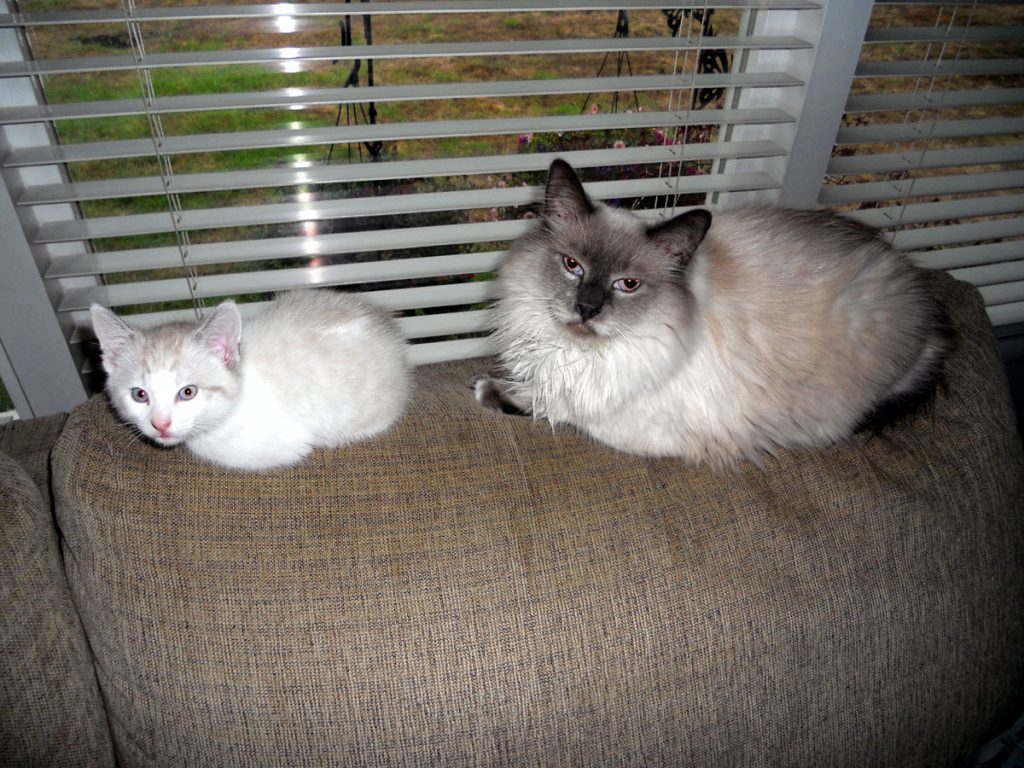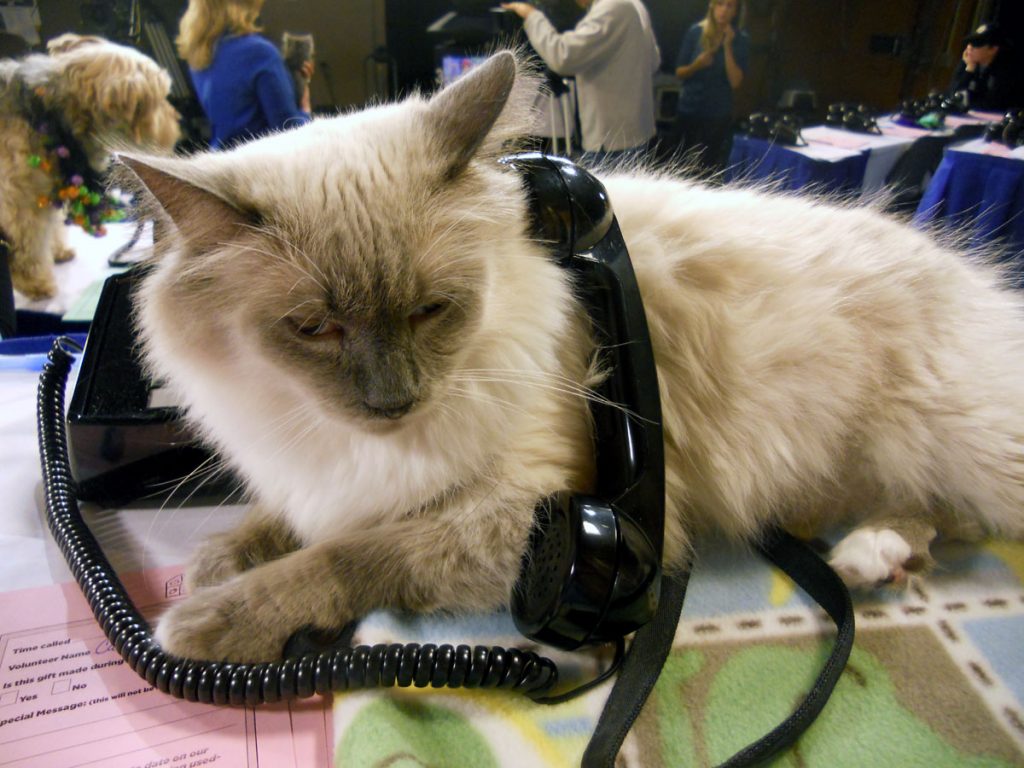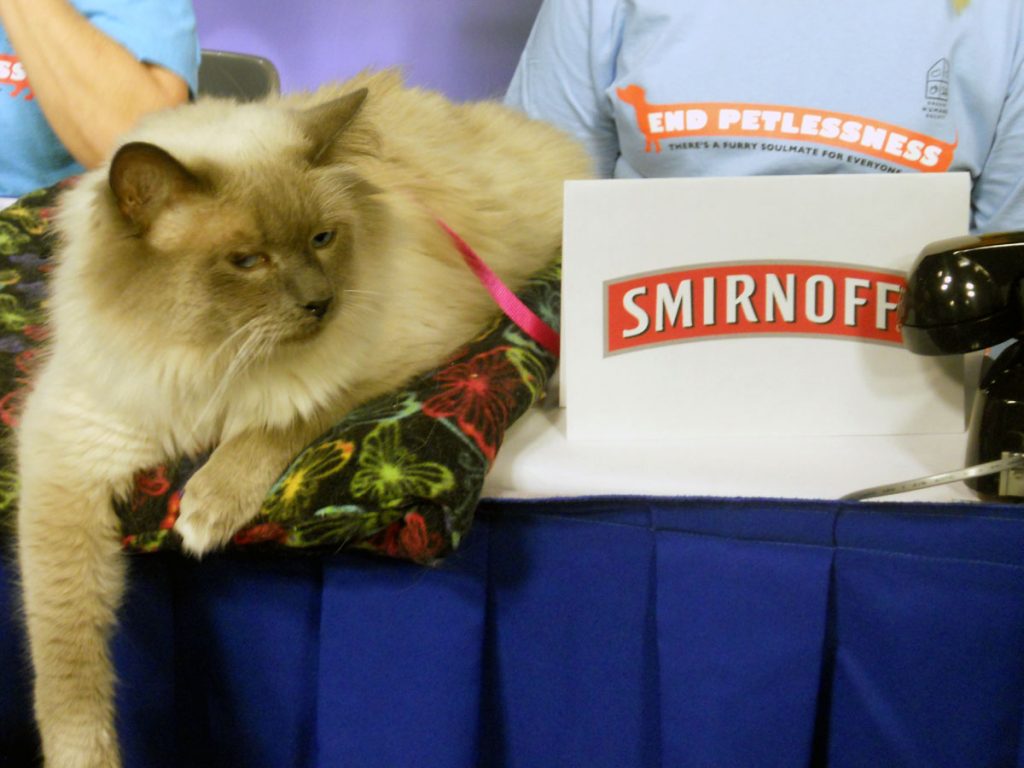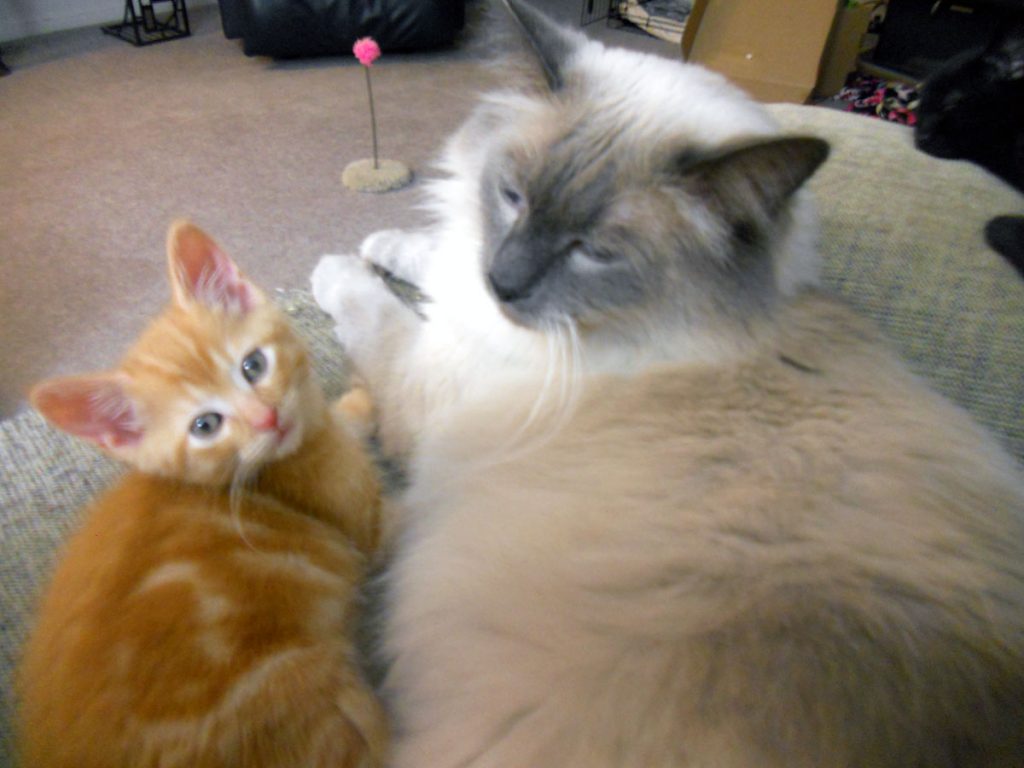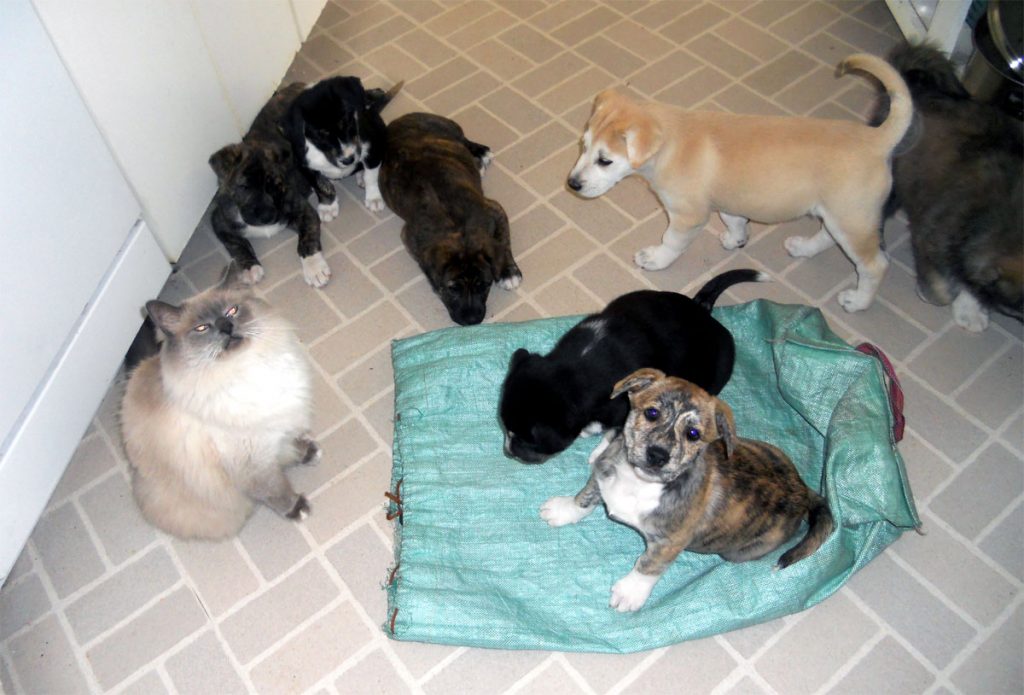What is a “foster failure” or “foster fail,” exactly? Though “failure” might sound negative, these are terms used to describe a happy, though unexpected, ending. A “foster failure” is when the foster caregiver falls in love with the pet and adopts him/her into their home to stay.
OHS foster volunteers provide care for pets who need time to grow, heal, become more social or work on manners before being made available for adoption. Unsurprisingly, people with such big hearts often fall in love with foster pets—and sometimes, they decide to make those pets a permanent part of the family.
—Editor’s Note
* * * * *
I’m kitten-immune. But adult cats, especially those with issues? Not so immune. My foster fail’s name is Woolie Bear. He’s a big, beautiful Birman cat. Woolie was one of 95 cats OHS took in while helping with a neglect investigation in Klamath Falls (story here). He came with a mouth full of bad teeth and breathing and sinus issues.
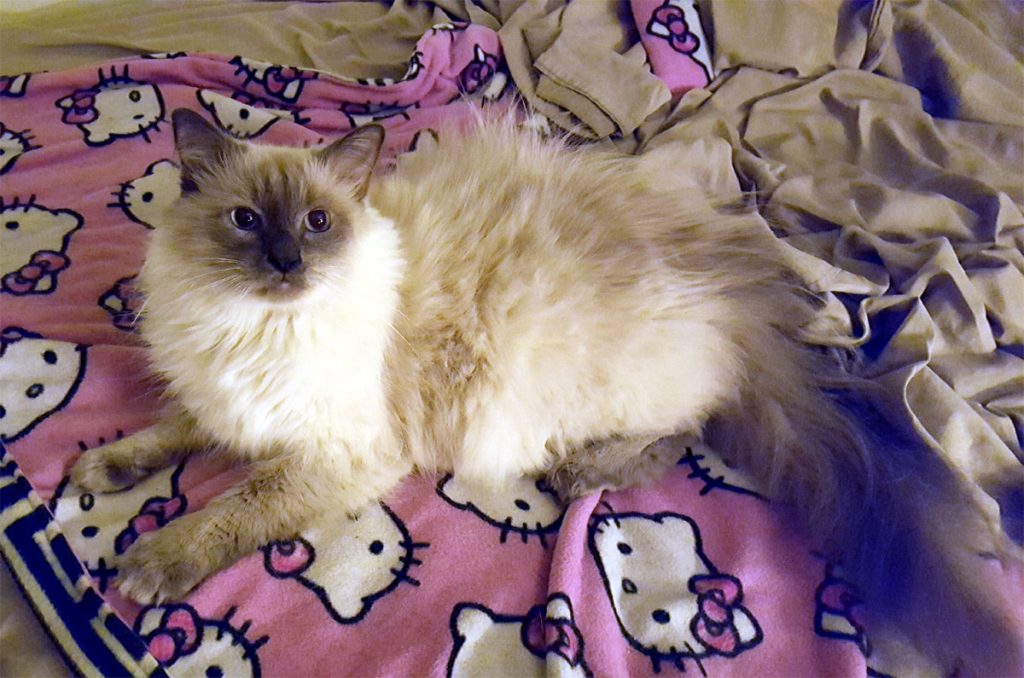
Because Woolie’s teeth bothered him so much he developed some unique habits: he loved to push his teeth and gums against my knuckles. Due to the OHS medical team being so busy with the 95 Klamath cats in addition to the rest of the shelter animals, we waited weeks for Woolie’s dental appointment. By that time, I was smitten. Woolie became my first foster fail. He’s a friendly, amiable kitty. He fit in easily at our house, unfazed by the other cats and dogs.
I set out to find out what happened when other foster parents had a foster fail. I interviewed Carol Christensen, who has fostered cats, dogs, rabbits, guinea pigs, hamsters and gerbils for OHS over five years. She takes in “anything they need a foster home for.”
Interestingly enough, when I asked Carol if she’d had a foster fail, she replied, “Yes, my cat Birmie was one of the Klamath Falls 95. I just knew he was so mellow that he’d be a great foster big brother.”
She was right: “I had a foster gerbil that played with Birmie. He’d put his front legs around the cage and the gerbil would run up and they’d rub noses. When I fostered 13 puppies this spring, Birmie would jump in the enclosure and play with the puppies.”
Carol added, “I foster a lot of the scared cats and I thought Birmie would be a great role model for them.”
Currently Carol has a foster kitten she calls Tiny. She described Birmie’s interaction with Tiny: “Every night, Birmie bathes Tiny. He even lets Tiny snuggle up to him like Birmie is his surrogate mother. Tiny is so attached to Birmie, it’s going to be very hard to return him to the shelter for adoption. My question is, is it a foster failure if my foster fail adopts him?”
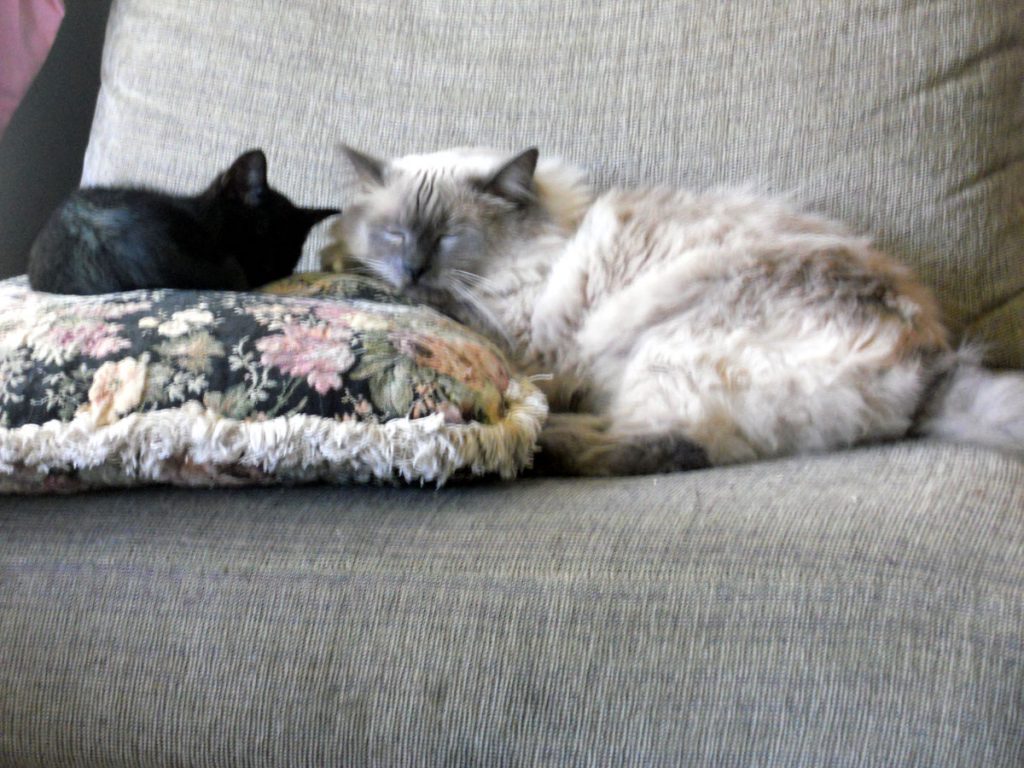
It’s funny because my Klamath Falls Birman is also a great foster brother and helped me tame a terrified feral foster kitten. It took almost eight weeks and I couldn’t have done it without Woolie. The kitten fell in love with him, and because he is so affectionate with me, she finally decided to accept me as well.
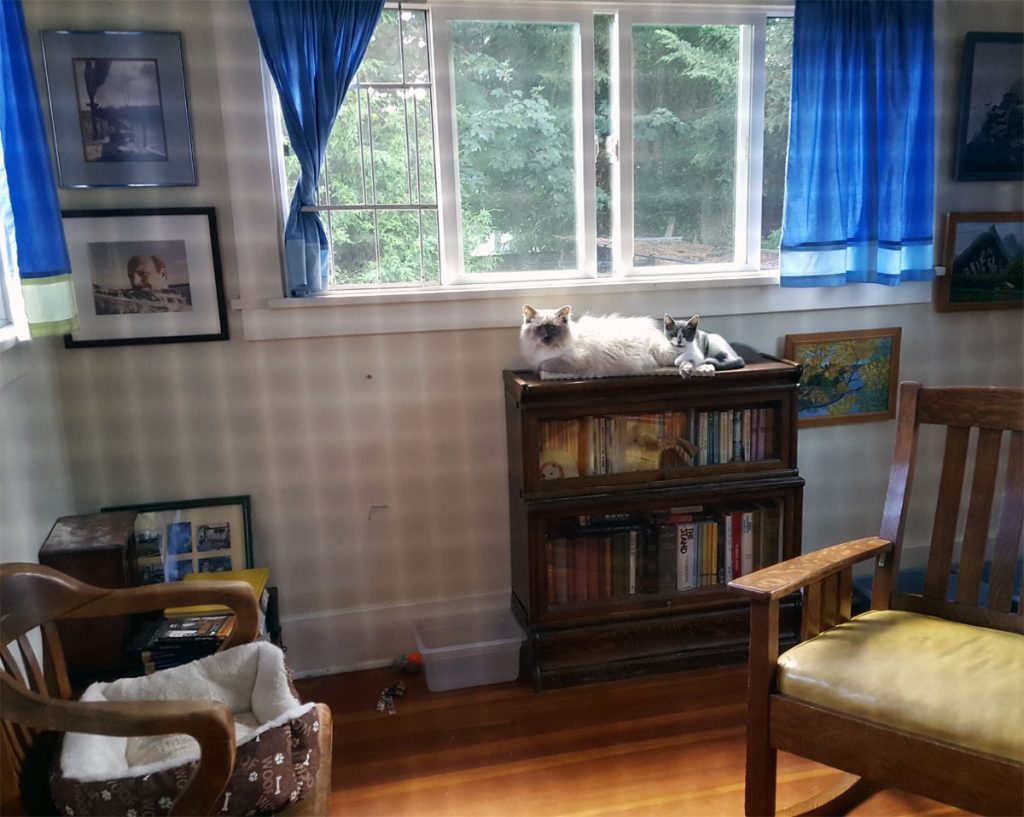
Next, I talked with another foster parent, Joanne Hodgdon, who’s fostered for OHS for seven years. Joanne fosters cats and kittens. She fostered two mice once who were part of a legal case. They were feral mice from a pet shop. From her tone of voice it sounded unlikely that Joanne would foster mice again!
Currently, Joanne has three foster fails at her house. The first was one of her very first foster pets, Andy. He was very sick and required a lot of care. Joanne was worried that he’d always be that sick. Now, of course, he’s “healthy as a horse.” Isn’t that always the way?
I asked Joanne what lead her to adopt these former foster pets. She answered, “Because they seemed to be hard-luck cases. They would require more time to find homes. I didn’t want them to be too stressed out at the shelter.”
When asked if she thought she’d fail again she said, “You know, I had kind of a hard time with my last foster cat. He was a little touch-and-go. I’m cutting myself off from taking in any more kittens. But an older cat with a sad backstory? It could happen.”
Sounds like I’ll have to check back on Joanne! It’s nice to know I’m in good company.
More Information & How You Can Help
Become an OHS foster volunteer »
More information about volunteering at OHS »
Read more: the story of Ponderosa, a fostered Italian Greyhound »


